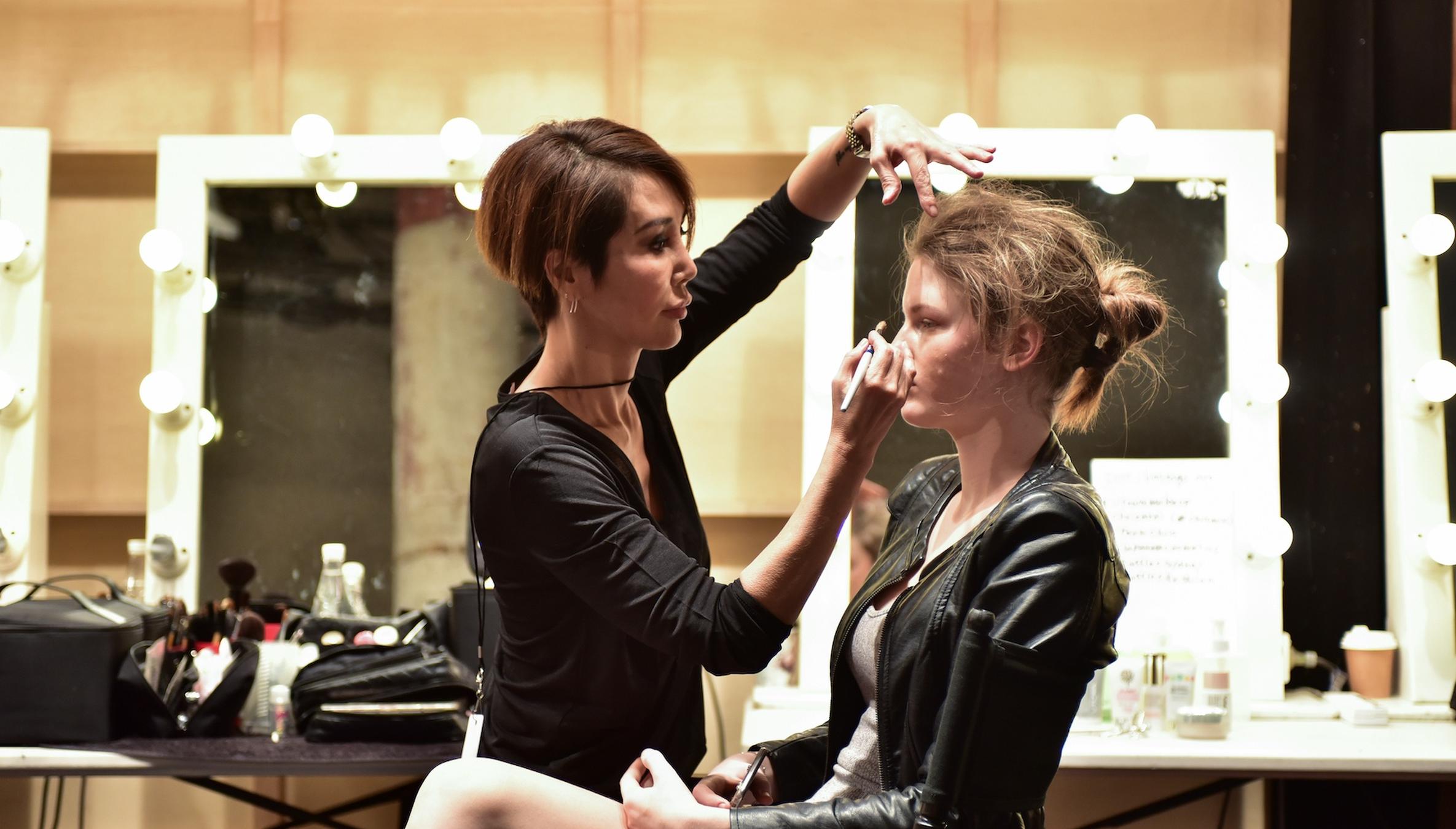In the world of theater, dance, and performance art, the transformative power of stage makeup and hair cannot be overstated. From accentuating facial features to creating elaborate character personas, these essential elements play a pivotal role in bringing performances to life. In this comprehensive guide, we delve into the intricacies of stage makeup and hair, exploring the techniques, products, and creative processes that define this captivating art form.

Creating Characters Through Makeup
- Foundation of Expression: At the heart of stage makeup lies the ability to convey emotion and character through color, texture, and contouring. Foundation serves as the canvas upon which the artist begins their creative journey, providing a smooth and uniform base for subsequent applications.
- Enhancing Features: Through the strategic use of highlights and shadows, performers can sculpt and define their facial features, bringing depth and dimension to their characters. Techniques such as contouring the cheeks, nose, and jawline can dramatically alter the appearance of the face, helping actors embody roles ranging from youthful ingenues to aged patriarchs.
- Eyes that Speak: The eyes are often referred to as the windows to the soul, and in the realm of stage makeup, they serve as a focal point for expression and communication. Bold eyeliners, dramatic lashes, and vibrant eyeshadows can be used to convey a wide range of emotions, from joy and excitement to sorrow and despair.
Mastering the Art of Stage Hair
- Versatile Styling: Just as makeup can transform a performer’s appearance, so too can hair styling play a crucial role in shaping character identities. Whether sleek and sophisticated or wild and untamed, hairstyles can convey personality traits, cultural backgrounds, and time periods with remarkable precision.
- Wigs and Hairpieces: In productions requiring rapid changes of appearance or elaborate hairstyles, wigs and hairpieces offer a practical solution. These versatile accessories come in a variety of styles, colors, and lengths, allowing performers to seamlessly transition between characters without the need for extensive styling.
- Accessorizing for Impact: From ornate headdresses to subtle hair ornaments, accessories can add an extra layer of detail and authenticity to stage hairstyles. Whether evoking the glamour of a bygone era or the mystique of a distant culture, carefully chosen accessories can elevate a performance to new heights of visual splendor.
The Importance of Long-Lasting Formulas
- Performance-Ready Formulas: In the demanding environment of live theater, makeup and hair products must withstand the rigors of performance, including bright stage lights, sweat, and costume changes. Opting for long-lasting formulas designed for stage use ensures that performers look their best from curtain call to final bow.
- Waterproof and Sweat-Resistant: For high-energy productions or outdoor performances, waterproof and sweat-resistant formulas are essential for maintaining flawless makeup and hair throughout the show. These resilient products provide peace of mind for performers, allowing them to focus on their craft without worrying about smudges or streaks.
- Easy Removal: While long-lasting formulas are crucial for performance durability, easy removal is equally important for the health and comfort of the performer. Gentle makeup removers and conditioning hair treatments help to cleanse and nourish the skin and hair, ensuring that performers can quickly and safely remove their stage makeup and hair at the end of the show.
Collaboration and Creativity
- Collaborative Process: The creation of stage makeup and hair is often a collaborative effort between performers, directors, makeup artists, and hair stylists. By sharing ideas, experimenting with different looks, and incorporating feedback from all stakeholders, productions can achieve a cohesive and visually striking aesthetic that enhances the overall theatrical experience.
- Innovative Techniques: In the ever-evolving world of stage makeup and hair, innovation is key to staying ahead of the curve. Makeup artists and hair stylists continually explore new techniques, products, and trends to push the boundaries of creativity and bring fresh perspectives to their craft.
- Celebrating Diversity: In an increasingly diverse and inclusive society, stage makeup and hair play a vital role in representing a wide range of cultures, identities, and experiences on stage. By embracing diversity and celebrating individuality, productions can create rich and nuanced portrayals that resonate with audiences of all backgrounds.
Conclusion
In conclusion, stage makeup and hair are indispensable tools for performers seeking to immerse themselves in character and bring their artistic visions to life. From the subtle nuances of facial contouring to the elaborate intricacies of hairstyling, these transformative elements enable actors to transcend the limitations of their physical appearance and embody the essence of their characters with authenticity and flair. By mastering the techniques, selecting the right products, and embracing collaboration and creativity, performers can harness the full potential of stage makeup and hair to captivate audiences and elevate their performances to new heights of artistic excellence.